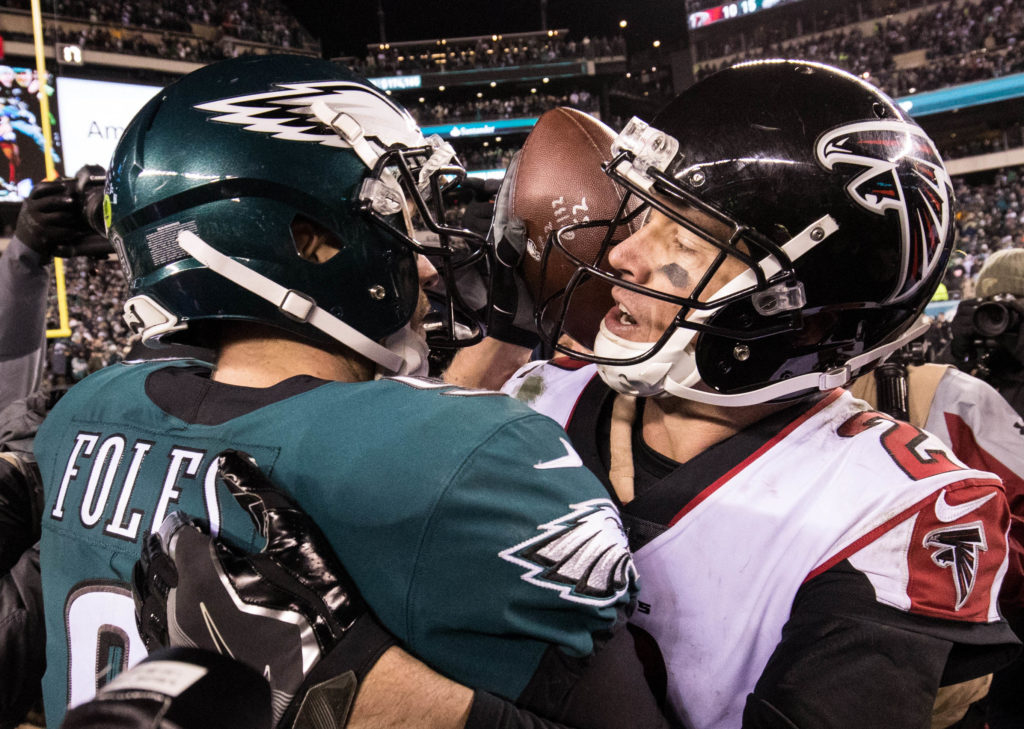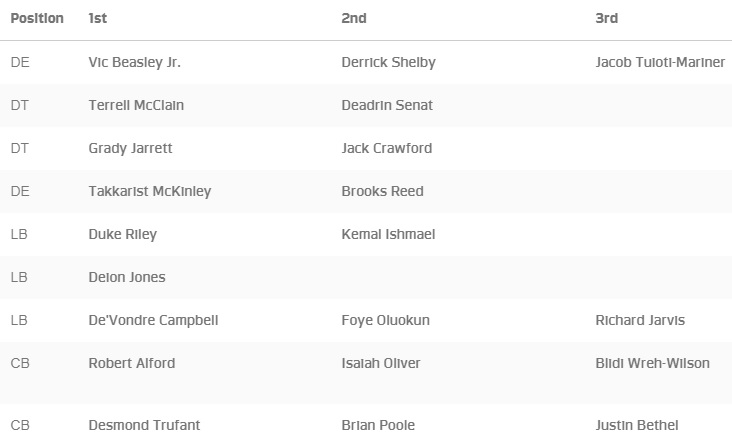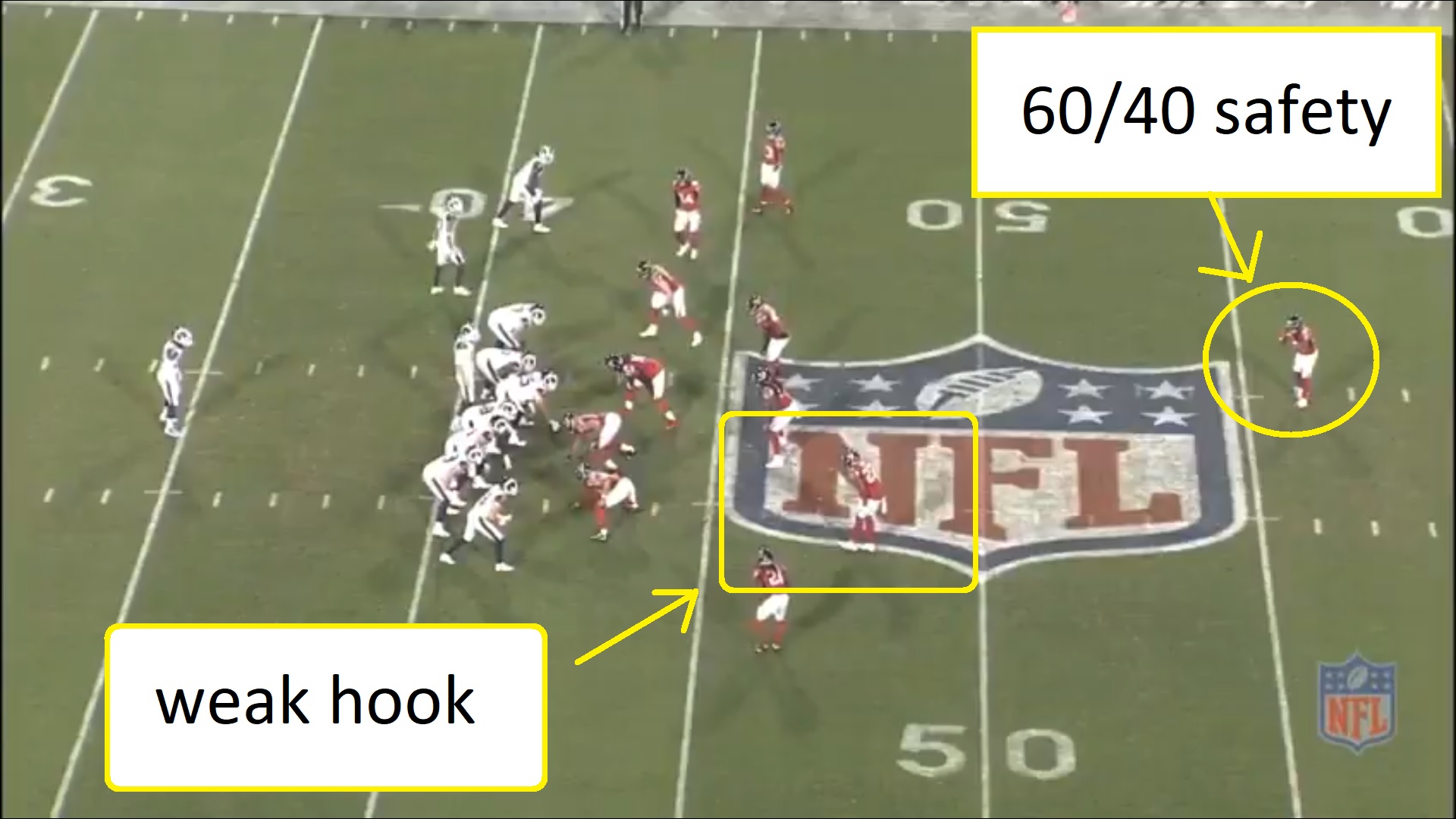Ad Disclosure
Eagles vs. Falcons Preview: A January Redux?

I get the sense that some folks are nervous about Thursday night’s season opener.
Fair enough; the Eagles are playing without their starting quarterback and top receiver as they trudge into week one with little momentum after an excruciatingly pedestrian preseason.
But we study history to find patterns and avoid repeat mistakes, to identify trends and provide context for contemporary course charting. Based on what happened just eight months ago at Lincoln Financial Field, nobody should confuse the Atlanta Falcons for the 1985 Bears or the Philadelphia Eagles for a half-ready squad facing an inevitable letdown.
Let me share one of the opening paragraphs from the postgame story I wrote after the Eagles’ 15-10 victory in the 2018 divisional round:
“The big takeaway from this one is really easy; the Eagles were FAR from perfect and still found a way to get it done. If you told me earlier this week that they would miss an extra point and finish with a -2 turnover differential, I would have chalked it up as a loss, no doubt. But they really buckled down and overcame a sloppy start, with Jay Ajayi recovering from his early fumble (and Doug Pederson giving him the opportunity to do so). The defense played lights out all night long, holding the Falcons to just 10 points, all of which were scored off two turnovers.”
Remember all of that? Ajayi coughed it up early and Pederson went right back to him. Jake Elliott followed up his XP miss with a 53-yard field goal. The defense locked it down after allowing a touchdown in a short-field situation following a muffed punt.
More from my story:
“The Birds did well in auxiliary areas to win this game. They won the possession battle, 32 to 28 minutes. They put together extended scoring drives of 14, 12, and 14 plays. The defense held Atlanta to a 4-13 (30.7%) third down conversation rate, well down from their league-leading 44.7% regular season number. [Julio] Jones got his yards (101 on nine grabs), but didn’t find the end zone. All three units finished with just 4 penalties for 24 yards. And they even had some balls bounce their way, not the fumble on the punt, but the disallowed Mohamed Sanu catch, the Nick Foles fumble recovery, and the ridiculous completion that came off a Falcon safety’s knee, just like they drew it up.”
They really did find a way to overcome some early struggles and get the job done despite being far off their best on the evening. The reason I bring all of that up again is because I feel like it should provide some reassurance heading into Thursday night:
- No, the Eagles don’t have Carson Wentz, but they didn’t have him when they beat the Falcons eight months back.
- No, the Eagles offense didn’t enter the game on a roll, but they found a second half groove.
- No, the Eagles didn’t run the ball particularly well, but they committed to the ground game and found the end zone on a gutsy fourth down play.
A lot of the patterns are the same here. There were serious doubts about the Birds heading into that game, some of which are resurfacing this week from people who might be a little skittish about the squad’s recent form.
Looking at the Falcons, I wouldn’t expect much to change offensively. Coordinator Steve Sarkisian returns with quarterback Matt Ryan and Julio Jones, Mohamed Sanu, Devonta Freeman, and Tevin Coleman working the skill positions. Austin Hooper was a middle of the pack tight end and four-fifths of the offensive line returns. Taylor Gabriel left for the Chicago Bears in free agency and is replaced by first round pick Calvin Ridley from Alabama.
The Falcons used their second round pick on Colorado cornerback Isaiah Oliver, then took defensive tackle Deadrin Senat out of USF in the third round to cover for the departed Dontari Poe.
That gives you a defensive depth chart that looks something like this:
It was a very good unit that finished ninth in total defense last season, allowing just 19.7 points per game, 104.9 rush yards per game, 214.3 pass yards per game, and forcing 14 total fumbles. They were top-15 across the league in all four of those statistics.
One thing they did not do well was reach the quarterback, finishing 27th with 24 sacks last season. They had 12 interceptions and ranked 18th overall, so they weren’t exactly a takeaway machine.
They’re a smaller and faster cover three defense that features that 60/40 “single high safety” that we talked about back in January, which is FS Ricardo Allen and SS Keanu Neal, who I couldn’t fit into that graphic above.
This was a typical 2017 Falcons look, with Allen playing the hash and responsible for the middle third of the field. Neal played the “weak hook” on the opposite hash in an advanced position, while the corners were each responsible for the other two-thirds of the field in the cover 3 scheme:
That’s a still frame of how they line up against an opposing offense in their typical scheme.
Here’s a short video clip of how it plays out – notice how Allen and the two corners each track back into their designated 1/3rd coverage area:
The Rams settle for a dump-down there.
One of the obvious weaknesses to this look is the “60” side of the field, which is the opposite hash on Allen’s weak side. If you can slip a receiver through the shallow coverage on the weak hook side, you’re asking the free safety to cover more ground to make a play on the ball.
To that point, I think there’s a little more responsibility on the corners to keep their men in front of them, because it’s more difficult for a single-high safety to come over and help if you get beat deep. You either press tight and smother a receiver or give him some cushion and allow short passes in lieu of getting gashed.
When the Eagles started moving the ball in the second half of the divisional game, Nick Foles found Alshon Jeffery on a couple of RPO plays where Desmond Trufant did the latter:
Trufant returns this season alongside Robert Alford and the rookie Oliver. Of course Jeffery won’t be available, so unless the Birds feature both tight ends heavily, you’d have Shelton Gibson and Mike Wallace, a pair of new faces, matching up with the Falcons’ starting outside pair.
So keep an eye on that when watching on Thursday night. It’s a very good defensive unit that did a nice job in Philly last season, but ultimately was undone with a clutch 4th and 1 play call from Doug Pederson and a couple of rhythmic drives orchestrated by Foles.
That’s probably the biggest storyline, the Eagles banged-up offense vs. a good Falcons defense.
I think this is gonna be another relatively low-scoring affair with the Birds’ defense holding down the fort until Foles gets it going in the 2nd or 3rd quarter. The loss of Nigel Bradham is significant, so I’d expect to see very little of the base 4-3 defense and a ton of nickel instead, which I’m assuming places Sidney Jones in the slot.
For quick reference, the Eagles defense did this to Atlanta in the playoff game:
- held them scoreless on five straight drives to end the game (4 punts, turnover on downs)
- shut out the Falcons in the second half
- held Devonta Freeman to 7 rushing yards on 10 carries (Coleman had 10 for 79)
- kept Julio Jones out of the end zone
- limited Mohamed Sanu to one big play (a 24 yard gain)
- had 3 sacks, 8 tackles for loss, and 11 QB hits
I can see it now; Eagles raise the Super Bowl banner, struggle offensively, and ship the Falcons an early lead. Then the crowd and the defense become suffocating in their own ways, inspiring a bit of confidence in the struggling O. Ryan and Sarkisian hit a wall and the Birds come back to win a tight one, 17 to 14 your final.
Kevin has been writing about Philadelphia sports since 2009. He spent seven years in the CBS 3 sports department and started with the Union during the team's 2010 inaugural season. He went to the academic powerhouses of Boyertown High School and West Virginia University. email - k.kinkead@sportradar.com

